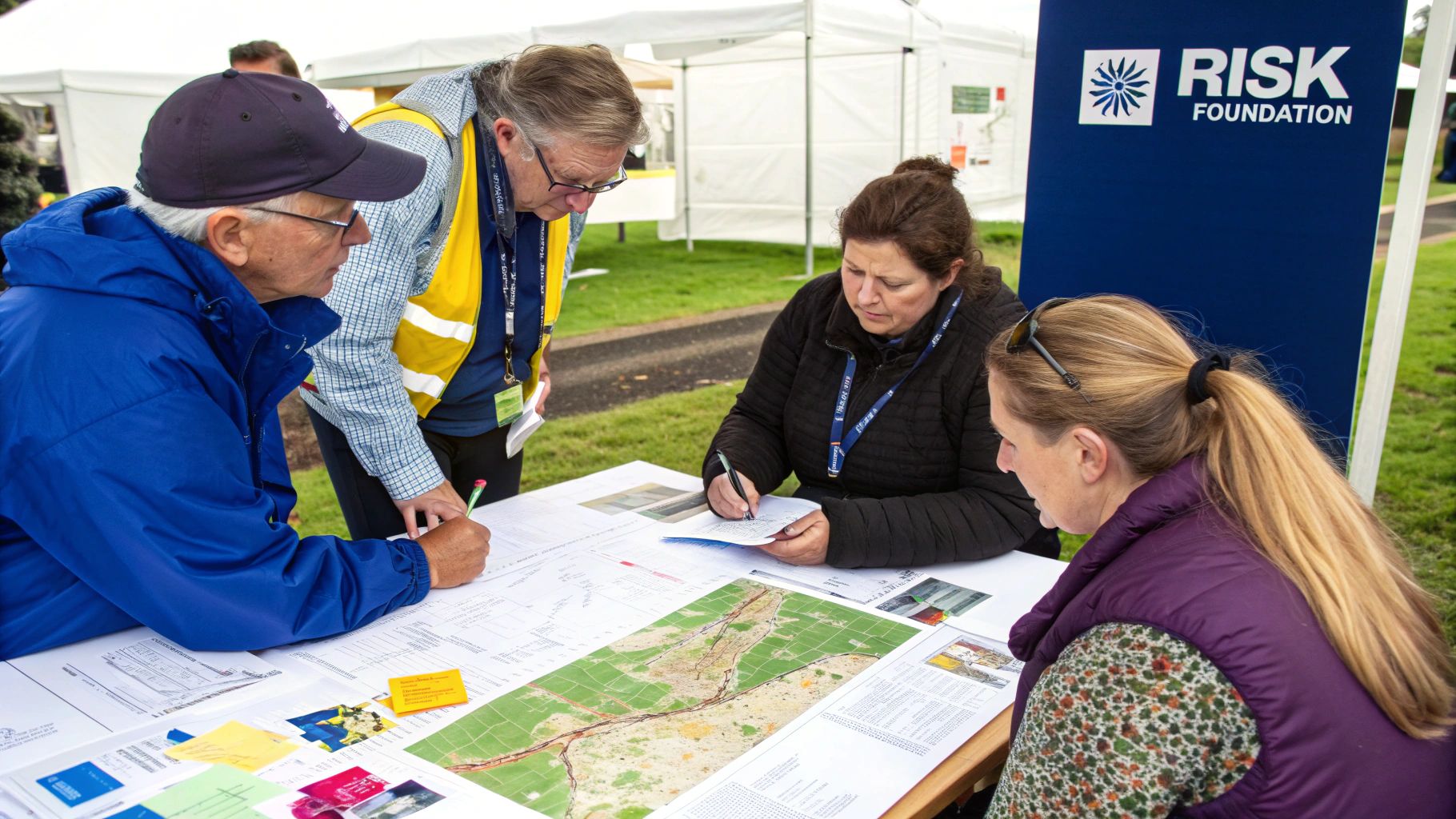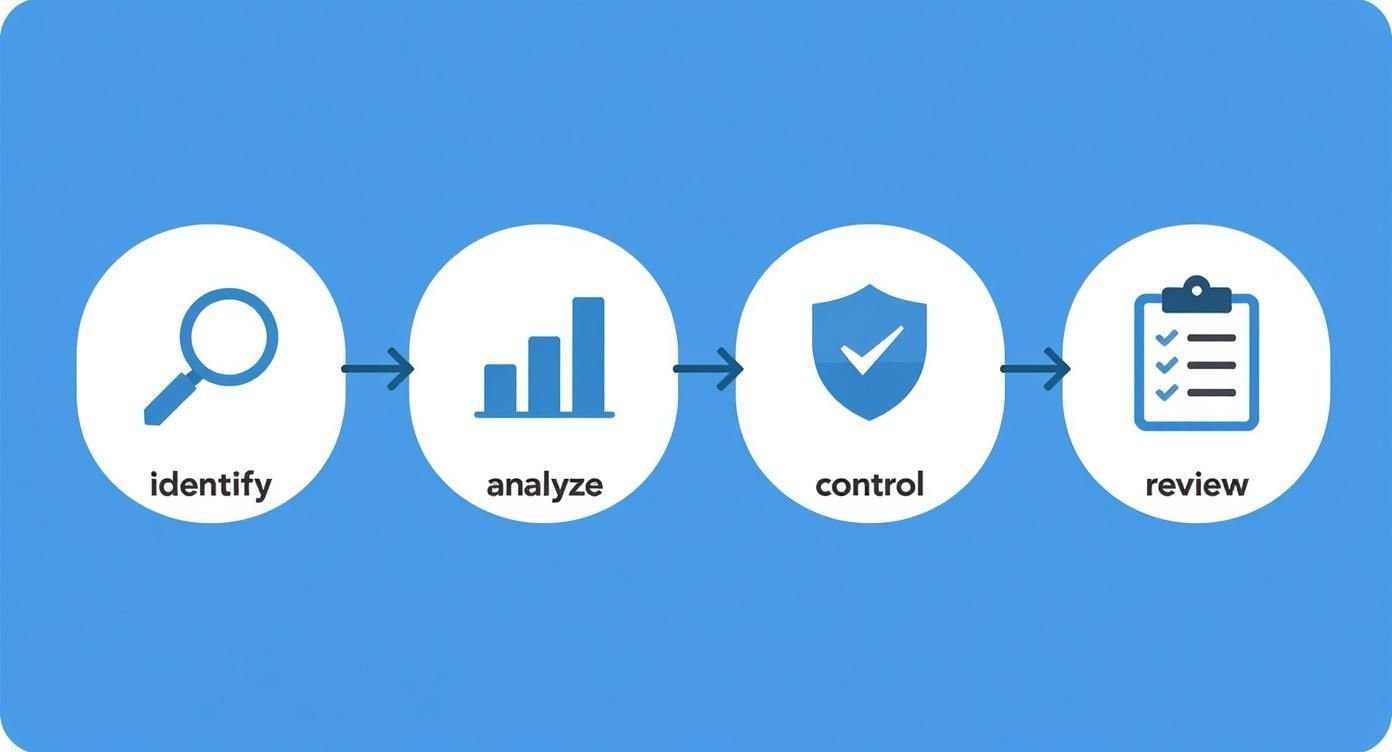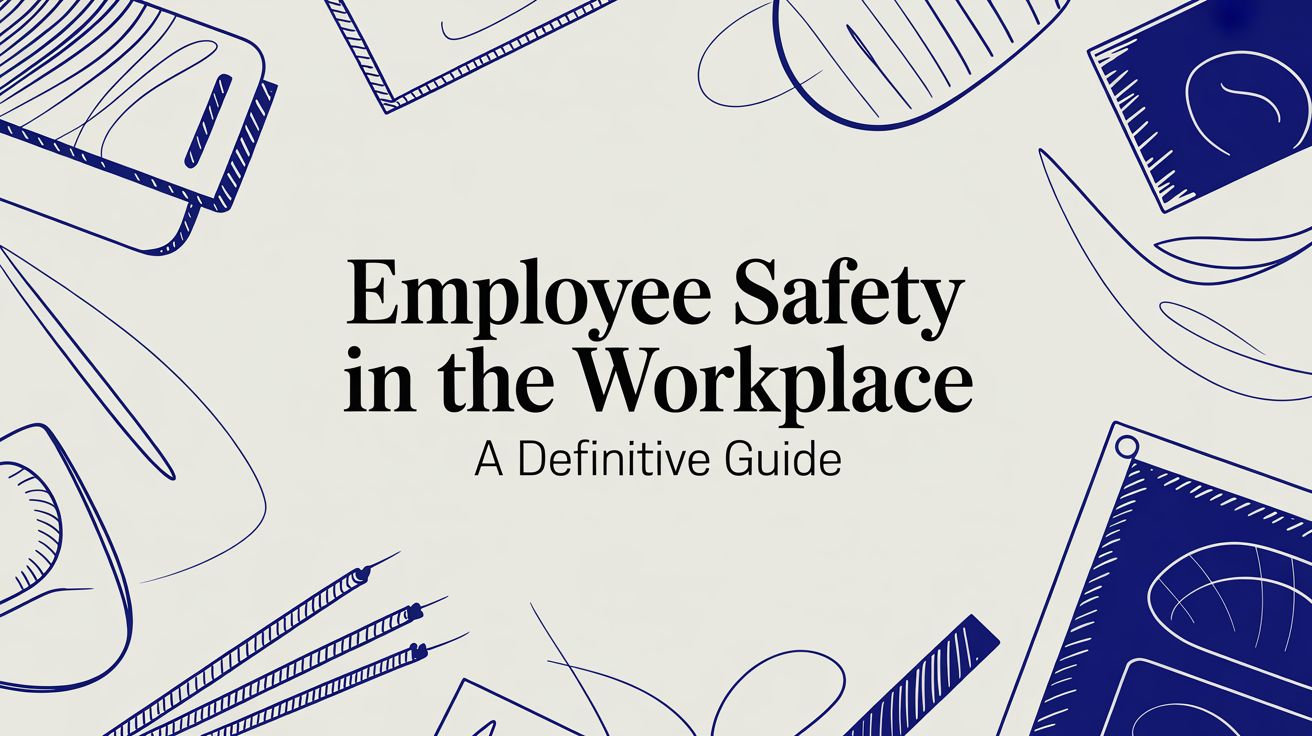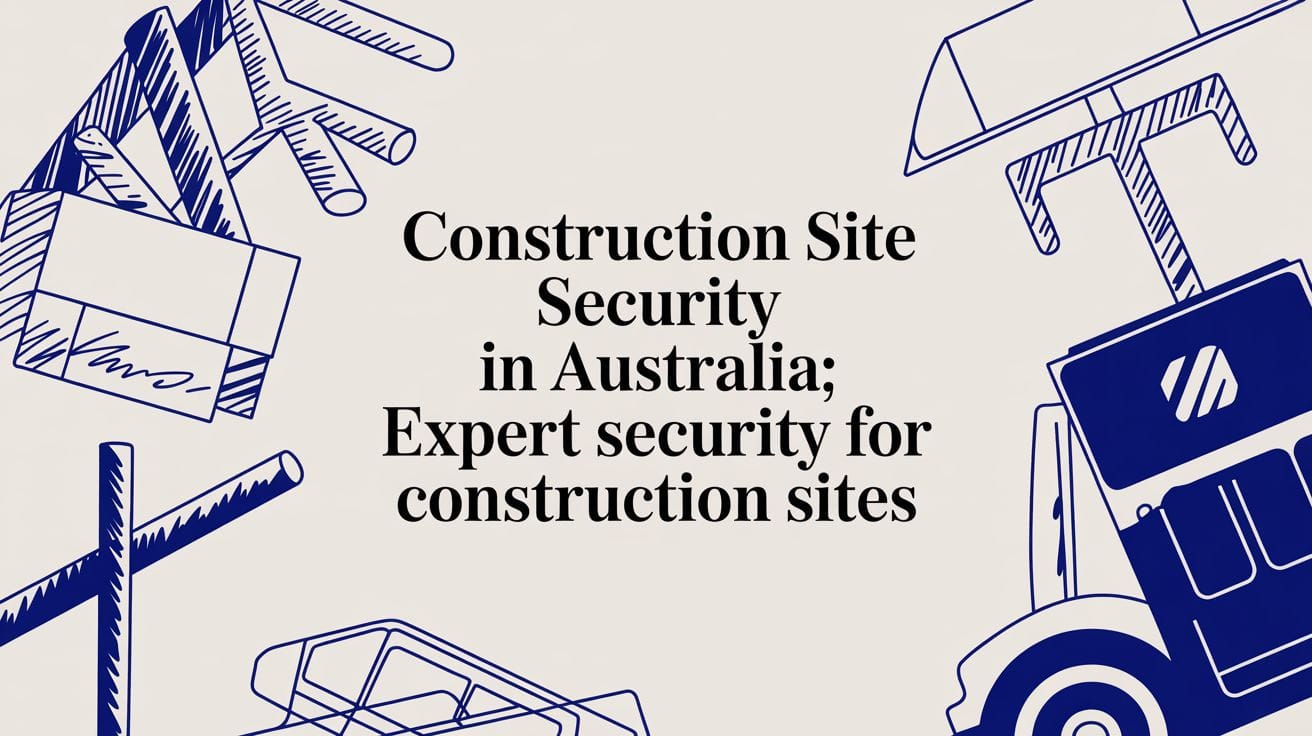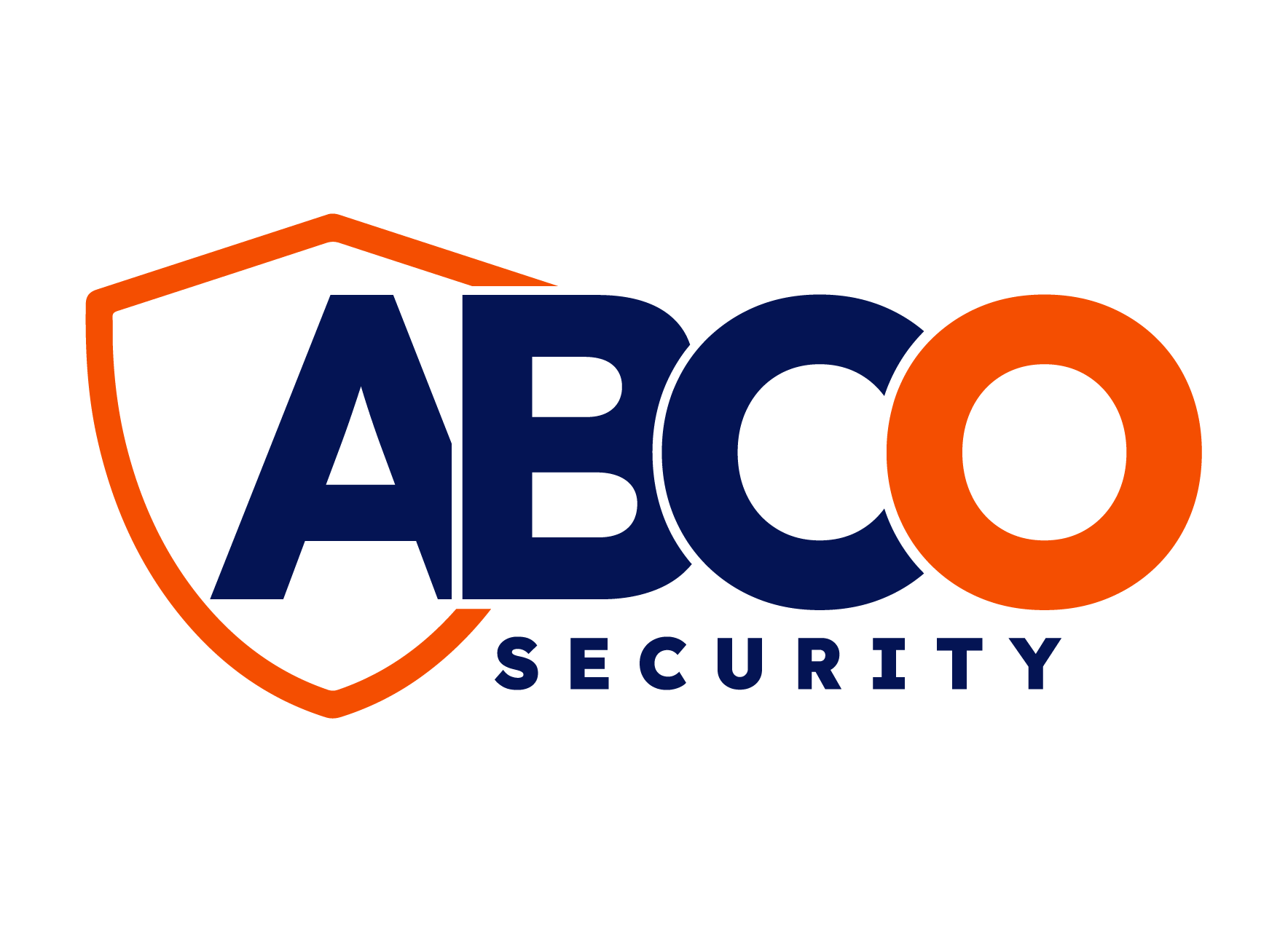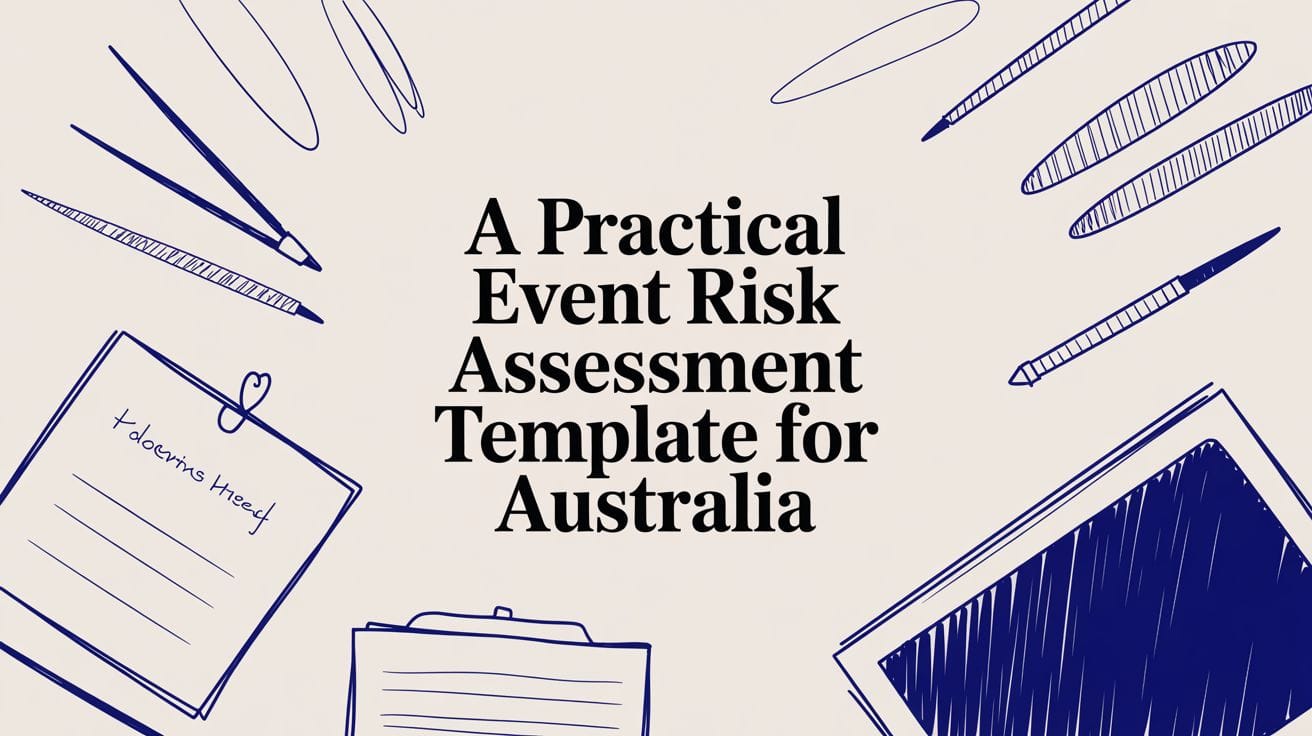
A quality event risk assessment template is far more than a simple to-do list. It is your strategic plan to systematically identify, assess, and manage potential hazards before they disrupt your event. At its core, it’s about keeping your guests, staff, and the public safe, while protecting your organisation’s reputation.
This process is fundamental to professional event management. A well-executed risk assessment ensures your event is remembered for all the right reasons.
Why a Solid Risk Assessment Is Your Event’s Foundation
It’s easy to view risk assessments as administrative paperwork. However, a thorough assessment is the absolute bedrock of any successful event in Australia. It is what separates a smooth, memorable experience from a potential disaster.
We must move past the ‘tick-box’ mentality. Proactive planning is what truly protects your guests, your team, and your reputation. This isn’t about red tape; it’s about professional responsibility and foresight.
Your Legal and Ethical Duties
In Australia, Work Health and Safety (WHS) laws are clear: as an event organiser, you have a duty of care. This is a legal requirement to take all reasonably practicable steps to ensure the health and safety of everyone involved—from attendees and volunteers to contractors and staff.
A documented risk assessment is the primary way to demonstrate you are meeting these obligations. It provides proof that you have considered the dangers and implemented sensible controls. This extends beyond avoiding fines; it reflects your ethical commitment to providing a safe environment.
From Theory to Practical Application
Let's use a practical example. Imagine managing crowd safety at a large Melbourne festival. A proactive risk assessment would identify potential crowd bottlenecks, determine the required number of professional crowd controllers, and map out clear emergency exits long before the event begins. It transforms vague concerns into concrete safety plans.
Consider a corporate event in Sydney. Your assessment would flag the risk of a sudden weather change. This prompts you to organise adequate shade, set up hydration stations, and have a solid contingency plan for a thunderstorm. It’s about ensuring guest safety and comfort, regardless of the circumstances. To see how these checks are vital, review some essential risk assessment checklists.
A comprehensive risk assessment reframes potential problems into manageable challenges. It’s the difference between reacting to an incident and preventing it from ever happening.
A robust assessment shields you against a range of problems:
- Physical Hazards: Preventing slips, trips, falls, or injuries from faulty equipment.
- Crowd Dynamics: Managing entry, exit, and movement to prevent overcrowding or surges.
- Environmental Risks: Preparing for heatwaves, sudden storms, or other adverse weather.
- Security Threats: Planning for unauthorised access, theft, or disruptive behaviour.
When you systematically work through these areas, your risk assessment becomes your most powerful strategic tool. For larger or more complex gatherings, engaging a professional Security Company Melbourne like Abco Security provides the expertise to turn your plan into a flawless on-the-ground operation.
Ready to build a safer event? A professional security partner can help you identify and mitigate risks effectively.
Book a Consultation with Our Security Experts Today
Your Downloadable Australian Risk Assessment Template
With years of hands-on experience at events across Australia, we've developed a practical event risk assessment template you can download and use. This is not a generic checklist; it is designed to meet local standards and address real-world situations.
Let's walk through what’s inside so you can see how each part functions. The goal is to provide a straightforward, effective framework that makes your event planning safer and easier from the start.
The Four Key Parts of the Template
Our template is built on four core pillars, guiding you from initial hazard identification to final review. This structure ensures you cover all bases logically without getting overwhelmed.
Hazard Identification: This is the starting point. You list everything that could possibly go wrong, from trip hazards like electrical cables to security concerns like unauthorised entry.
Risk Analysis: It’s not enough to list hazards; you must determine which are most serious. We use a simple matrix to score each risk based on its likelihood and potential impact. This helps you prioritise your focus.
Control Measures: This is your action plan. For each high-priority risk, you outline specific steps to eliminate or reduce its impact. This could range from installing clear signage to hiring a licensed security guard service.
Review Process: A plan requires execution. This final step involves assigning responsibility for each control measure and setting clear deadlines, ensuring accountability.
An Overview of Your Template Sections
Here’s a snapshot of the essential parts of our downloadable template and their purpose.
| Template Section | What It Helps You Do |
|---|---|
| Hazard Identification | Systematically list all potential dangers specific to your event and venue. |
| Risk Analysis | Evaluate the likelihood and severity of each identified hazard to prioritise your focus. |
| Control Measures | Develop and document specific actions to mitigate the highest-priority risks. |
| Review Process | Assign clear ownership and deadlines to ensure control measures are implemented and effective. |
Think of this risk assessment document as more than just a form; it's your strategic roadmap to a safe, successful event. It compels you to consider every angle, from first aid station placement to the deployment of a professional security team.
As leading industry bodies like the Australian Security Industry Association Ltd (ASIAL) state, a documented assessment is fundamental to demonstrating due diligence. Our template provides the structure you need.
Ready to get started?
Download Your Free Template & Book a Security Consultation
Getting the Most Out of Your Risk Assessment Template
Having a great event risk assessment template is one thing; using it effectively is what truly makes a difference. A template is a starting point; its power comes from the thought and detail you apply to it. Let's walk through how to complete your assessment properly, turning that document into a dynamic safety tool.
We can break the process into four straightforward stages. Following these steps provides a thorough, practical approach to protecting your guests, staff, and reputation.
This simple workflow shows how risk management is a continuous cycle, not a one-off task.
As you can see, safety isn't a "set and forget" activity. It's an ongoing commitment to identifying, analysing, controlling, and reviewing potential hazards from the first planning meeting to the final pack-down.
Identifying Potential Hazards
First, you need to spot every potential hazard tied to your event. This is a brainstorming phase where no idea is too small. Think laterally and cover all bases to ensure nothing is missed.
A great way to do this is to walk through your venue—both physically and mentally—from different perspectives. Imagine you're an attendee, a staff member, or a first responder. What could go wrong?
Consider these common hazard categories:
- Physical Hazards: These are often the most obvious. Think trailing electrical cables, uneven ground, poorly lit stairwells, or temporary structures not secured against strong winds.
- Environmental Hazards: Australia's climate presents significant risks. This includes extreme heat leading to dehydration, sudden downpours causing slippery surfaces, or high winds that could topple equipment.
- Security Hazards: This category covers human-related threats. We're talking about unauthorised access (gatecrashers), theft, disorderly conduct, or larger-scale disruptions.
- Logistical Hazards: These risks arise from event operations. Consider poor crowd flow creating bottlenecks, insufficient parking causing traffic issues, or a ticketing system failure.
A thorough hazard identification process is proactive, not reactive. The goal is to spot the potential for an incident long before it has a chance to occur, giving you the time and space to plan effectively.
When filling out your event risk assessment template, be specific. Instead of "bad weather," detail the risk like "heatstroke during afternoon sessions" or "flash flooding in the car park." This detail is crucial for the next step.
Assessing and Prioritising Risks
Once you have your list of hazards, it's time to analyse them. Not all risks are equal; some are minor, while others could be catastrophic. The goal is to determine which risks require immediate attention.
This is where a risk matrix is invaluable. It’s a simple tool that helps you qualify risk based on two factors:
- Likelihood: How likely is this to happen? (e.g., Rare, Unlikely, Possible, Likely, Almost Certain)
- Consequence: If it happens, how severe will it be? (e.g., Insignificant, Minor, Moderate, Major, Catastrophic)
By plotting each hazard on this matrix, you get a clear snapshot of your event's risk profile. A hazard that is 'Almost Certain' with 'Major' consequences is a top priority. A 'Rare' event with an 'Insignificant' outcome can be addressed later.
Example Scenario: A Music Festival
- Hazard: A concertgoer trips over a power cable in a dimly lit area.
- Likelihood: Likely (high foot traffic, potential for darkness).
- Consequence: Moderate (could result in a serious injury and a potential liability claim).
- Priority: High. This needs an immediate control measure.
Example Scenario: A Corporate Conference
- Hazard: The keynote speaker’s presentation file is corrupted.
- Likelihood: Unlikely (if backups are standard practice).
- Consequence: Minor (an inconvenience but no physical harm).
- Priority: Low. Still worth having a backup plan, but not as critical as a safety issue.
This prioritisation helps you focus your resources—time, money, and people—where they'll have the biggest safety impact.
Implementing Effective Control Measures
After prioritising risks, the next step is deciding what to do about them. For every significant risk, you need a specific control measure. Best practice is to use the Hierarchy of Controls.
This framework, embedded in Australian WHS legislation, ranks safety solutions from most to least effective.
- Elimination: Can you remove the hazard completely? For example, re-routing cables overhead eliminates the trip hazard.
- Substitution: Can you replace the hazard with something safer? Use non-flammable decorations to reduce fire risk.
- Engineering Controls: Can you make a physical change to the space? Install temporary fencing to create clear crowd-flow channels.
- Administrative Controls: Can you change how people work? Use clear safety signage, conduct staff briefings, or schedule regular security patrols. Our Frequently Asked Questions section offers insights into common security procedures.
- Personal Protective Equipment (PPE): This is your last line of defence. Provide high-visibility vests for parking attendants or safety glasses for stage crew.
Your risk assessment document must clearly state which control measures will be used for each risk. This turns your assessment into a clear action plan.
Assigning Responsibility and Review Dates
A plan is useless without accountability. The final part of your template is assigning a specific person or team to implement each control measure.
This simple act transforms a theoretical plan into a set of actionable tasks with clear ownership.
For each control measure, you should assign:
- Who is Responsible: Name a specific person (e.g., "John Smith, Venue Manager") to avoid confusion.
- By When: Set a realistic deadline, ensuring it’s well before the event.
- Review Date: Schedule a time to check that the control has been implemented correctly and is effective.
As endorsed by industry bodies like the Australian Security Industry Association Ltd (ASIAL), documented accountability is a cornerstone of professional safety management. It demonstrates your commitment to compliance and due diligence.
By diligently working through these four stages, your event risk assessment template becomes a living document—a clear, documented, and defensible strategy for a safe and successful event.
Ready to put this knowledge into practice with expert support?
Book Our Professional Security Services Today
Tailoring Your Plan for Different Australian Events
A generic risk management plan is not sufficient. Your event risk assessment template should be a starting framework, not a rigid checklist. Its power is unlocked when you adapt it to the unique circumstances of your gathering, ensuring your plan is practical and relevant.
The risks at a corporate conference in a Melbourne skyscraper are worlds away from those at a music festival outside Perth. Customising your assessment transforms it from a tick-box exercise into a genuinely useful safety tool.
Corporate Conferences and Indoor Events
Indoor corporate events may seem controlled, but they have unique risks. Your focus must shift from weather to access control, building systems, and vertical logistics.
Consider the specific hazards of a multi-storey venue:
- Access Control: How do you prevent unauthorised access to sensitive areas? This includes managing lifts and stairwells, not just the front door.
- Technical Failures: What is your plan for a power outage or AV system failure during a major keynote?
- Emergency Evacuation: Evacuating a high-rise building is complex. Your plan must cover phased evacuations, clear assembly points, and assistance for attendees with mobility issues.
For corporate events, the biggest risks often revolve around technology, building access, and infrastructure. Your risk assessment must be fine-tuned to these indoor-specific challenges to be truly effective.
Outdoor Festivals and Large Public Gatherings
When you move outdoors, the complexity multiplies. You face the elements, manage huge crowds in open spaces, and deal with a far more dynamic environment.
Your risk assessment needs a major pivot to handle these large-scale issues. The Australian Security Industry Association Ltd (ASIAL) consistently emphasises the importance of dynamic planning for these events, as conditions can change rapidly.
Here’s what should be at the top of your list:
- Crowd Management: Identifying potential bottlenecks and crush points is essential, requiring careful site layout and experienced crowd controllers.
- Medical Emergencies: The chance of medical issues skyrockets with crowd size. Your plan must pinpoint first aid locations, specify medical staff numbers, and guarantee clear ambulance access.
- Extreme Weather: A sudden thunderstorm or heatwave is a serious threat. Contingency plans for shelter, hydration, and event cancellation are non-negotiable.
- Site Security: A large, temporary perimeter is difficult to secure. Your assessment must detail how you’ll prevent unauthorised entry and monitor the entire area. Strategic mobile security patrols are invaluable for this.
Local Sporting Events and Community Functions
Even a smaller event like a local football match or school fete needs a tailored risk assessment. The crowds may be smaller, but your duty of care remains. Here, risks tend to be more localised.
For these gatherings, your template should help you focus on:
- Participant Safety: Managing injury risks for players, having first aid available, and ensuring equipment is safe.
- Traffic and Parking Management: A clear plan for vehicle flow and parking is vital to prevent gridlock and keep pedestrians safe.
- Public Liability: Slips, trips, and falls are common. Identify hazards like uneven ground, temporary cabling, and children's play areas.
- Food Handling: If community vendors are selling food, your plan must include checks for food safety compliance to prevent public health issues.
By thinking through these different scenarios, you learn to look at your event with a more critical eye. This process turns your event risk assessment template into a living document perfectly suited to your needs.
Planning for Modern Risks in the Australian Context
https://www.youtube.com/embed/AdVWwz37VJo
Planning an event in Australia today means looking beyond traditional hazards. An effective event risk assessment template must tackle modern challenges, from extreme weather to sophisticated digital threats.
It’s about being proactive. Organisers must now integrate climate-related risks into their planning. This could mean preparing for a blistering heatwave, dealing with bushfire smoke, or planning for flash flooding.
Adapting to Climate Change Realities
The Australian climate is becoming more unpredictable. You cannot afford to ignore the potential for extreme weather; the consequences can be devastating.
Australia’s first National Climate Risk Assessment highlights how climate change is amplifying event risks. It notes that 7.5% of all residential buildings are in high-risk zones, with Queensland particularly vulnerable. The report forecasts that Brisbane could see coastal flooding for up to 314 days a year if global temperatures rise by 3°C. This data is a call for practical, location-specific planning.
Your risk assessment needs clear contingency plans for:
- Extreme Heat: Abundant shade, free water stations, and medical teams trained to handle heat exhaustion.
- Severe Storms: Well-rehearsed protocols for moving people to secure shelter and locking down temporary structures.
- Bushfire Threats: Constant air quality monitoring, a communication plan for alerts, and established evacuation routes.
Addressing Emerging Security and Digital Threats
The security landscape is also evolving. Events now rely on technology for ticketing, promotion, and guest management, opening up new digital risks.
A comprehensive risk assessment must include cybersecurity. Consider what happens if your digital ticketing system fails, how you're protecting attendee data, and your plan for online disruptions. You can find further insights into IT security risks.
In today’s world, physical and digital security are two sides of the same coin. A robust risk assessment addresses both to create a genuinely secure event experience for everyone.
Physical security threats have also become more complex. Your plan needs to consider organised disruptions, protests, or other anti-social behaviour. Staying informed on these trends is vital, which is why we regularly update our security industry news to help clients stay ahead.
By broadening your risk assessment document to cover these modern challenges, you're not just ticking boxes. You're building a more resilient event and demonstrating expert care and preparedness.
Need help creating a security plan that covers all modern risks?
Book a Security Consultation with Abco Security Today
Why You Should Team Up with Security Experts
A solid event risk assessment template is an excellent start, but it's just a document. Its real power is realised when professionals on the ground can implement the plan. A security partner transforms your ideas into a watertight safety strategy.
It is one thing to identify a risk on paper; it is another to manage it in a live environment. Licensed security professionals are trained for the real-world scenarios a template cannot predict, ensuring your event is genuinely safe.
Turning Your Plan into On-the-Ground Action
An experienced security team does more than stand at the door. They bring operational expertise that elevates every part of your safety plan.
Think about what this looks like on the day:
- Reading the Crowd: Professionals can sense the mood of a crowd, spotting potential trouble before it starts and managing movement to prevent dangerous bottlenecks.
- Managing Entry & Exit Points: Experts manage access points efficiently and securely, balancing tight control with a positive guest experience.
- Responding in a Crisis: Trained guards are your first line of defence, providing an immediate, coordinated response until emergency services arrive.
Our team of licensed professionals brings the judgement and skills to manage these scenarios. Learn more about the vital role of security guards for events.
Covering Your Bases and Getting Peace of Mind
Working with a reputable security firm also provides peace of mind regarding compliance. A professional partner is always up-to-date with Australian industry standards, licensing, and best practices. You can rest easy knowing your security operations are fully compliant.
Getting an expert to cast their eye over your risk assessment can reveal blind spots you’d never have thought of. This kind of collaboration ensures every angle is covered, giving you total peace of mind.
This proactive approach to risk is becoming standard across Australia. National agencies are shifting their focus accordingly. The Australian Security Intelligence Organisation (ASIO), for instance, has been pushing for more proactive risk frameworks. Their latest Annual Threat Assessment covers everything from cyber threats to other complex security challenges, showing how broad the definition of 'risk' has become.
Building a Bulletproof Safety Plan, Together
Ultimately, it’s about collaboration. Your security partner should be an extension of your team. They will use your risk assessment as a blueprint, pressure-test it, and fine-tune the plan to match the unique realities of your event.
This partnership turns your risk assessment document from a static checklist into a dynamic, operational guide. It is the smartest investment you can make to ensure your event is a success.
Ready to team up with experts who can bring your risk assessment to life? ABCO Security Services Australia has the local knowledge and professional expertise to protect your next event.
